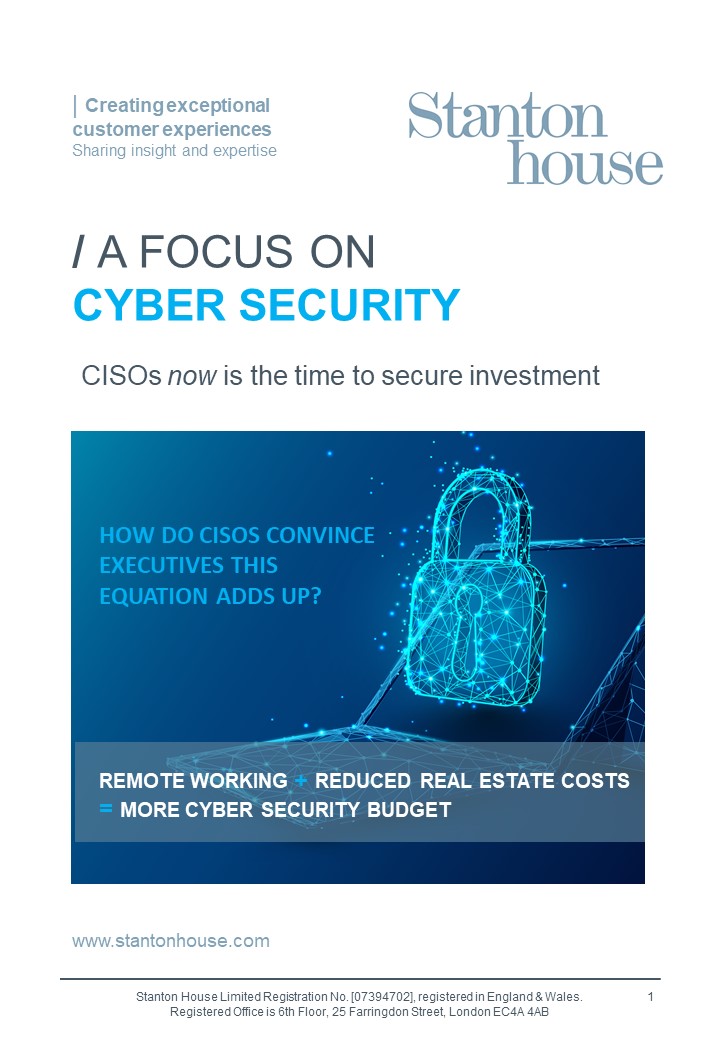

The world of work is changing and as a people professional, this means constantly seeking ways to get ahead by introducing new initiatives to enhance the employee experience, to attract and retain the best talent.
In the past 12 months at Stanton House, we have overhauled our entire flexibility approach by introducing enhanced annual leave, encouraging flexible hours and changing our contractual working hours and the big one – Work From Anywhere or ‘WFA’.
In this blog I talk about my experience of WFA, both from an employer’s perspective to help HR professionals and business leaders implement the scheme, and also as an employee, who made use of the scheme herself, to show you how to make it work for you!
What is Work from Anywhere?
Unlike ‘Hybrid Working’ and ‘Flexible Working’, there are currently no HR or business definitions for Work From Anywhere. This is why many schemes shared publicly by companies like Spotify, Airbnb and Salesforce, vary in approach.
In my experience, WFA is part of an employer’s flexible approach to working and it typically means employees can choose to work remotely, either temporarily or permanently, whilst able to deliver on their performance and remain connected to company culture and goals.
For Stanton House, the WFA scheme means our people can request to work remotely on a temporary basis throughout their employment.
Does the scheme work for your business?
Firstly, it’s important to consider whether this scheme works for your business, both practically and strategically.
There’s no right or wrong answer as to whether you should implement a Work From Anywhere scheme, but if you can offer some form of remote working and choose not to without good reason or communication, it’s highly likely you will lose talent to your competitors.
You may have employees who must be physically present to fulfil their duties such as IT Engineers or Office Managers. It’s always healthy to challenge yourself on the reason why those people need to be physically present and whether it’s just the way it’s always been done, but of course, a lot of roles require physical presence so if most of your workforce cannot work remotely then the scheme is probably not for you, and that’s fine too!
How to devise and implement
For those that can offer remote working, a good place to start with devising your scheme is to assess how remote working has panned out previously. If like many businesses your employees worked remotely during Covid-19, that’s a great data source to use when formulating your policy.
Here are some key questions to contemplate: How was individual performance impacted? What were the initial challenges of moving to a remote/hybrid environment? Do those challenges still exist? How did people stay connected? How was the culture impacted? How were company comms managed? What was your attrition rate like (from voluntary leavers)? How does that compare now? What feedback did you get from exit interviews?
Once you’ve reflected on these questions, there are some additional business and legal considerations to contemplate for your scheme, particularly if you allow employees to work in a different country (not an exhaustive list).
1) Tax - this is a very complex area and you should always seek specialist advice from your tax adviser/solicitor. If employees are spending just a few days working overseas, it’s unlikely to trigger any tax implications, but this doesn’t eliminate the risks. It’s extremely important to make sure that the business is compliant from a tax perspective to avoid any unexpected liabilities, and to make this crystal clear in your WFA policy.
2) Visas - again, this very much depends on where and for how long your employees will be working in a different country. In the digital era, there are c.50 countries that offer some form of ‘digital nomad visa’ but if this is a WFA scheme and you’re not a remote-first business, it might be better to put a time limit or restriction on how long someone can work remotely for, particularly if they’re working abroad.
3) Time zones – you may want to consider guidance around time zones in your scheme, particularly in customer-facing roles. For example, will you require them to work within their ‘normal’ time zone or will you allow some flex on either side3? This may tie in with your flexible hours policy if you offer that too.
4) Medical cover - if you offer private medical insurance for your employers, does this cover them overseas?
5) Employer’s Liability Insurance – this will generally offer a certain level of cover for remote workers but will hugely depend on the policy and level of cover you have.
How does this differ from Remote-First?
Even if you choose to implement a Work from Anywhere scheme, it doesn’t mean fully remote work would work for your business long term.
Remote-First is when a business decides that its employees can work remotely permanently, whereas Work from Anywhere is typically more of a temporary arrangement.
For us, as a recruitment agency/executive search firm, we know most of our people could do the majority of their roles fully remotely. However, as a customer-facing business centered entirely around customer experience, we know the importance of in-person interactions and events, and we value those interactions with our customers and employees alike. We also found from employee feedback surveys that the thing our people missed the most throughout Covid was spending time physically with colleagues both in and out of the office. Finally, we knew from our experience throughout Covid that onboarding people remotely worked fine but, for our business and particularly those new to recruitment, being physically present is so beneficial for learning and development and building relationships. Therefore, what works for us is a hybrid working pattern with flexible hours and a WFA scheme, instead of being remote-first.
What about using the scheme?
With the new scheme fully implemented and communicated, I decided it was the perfect time to combine my passion for travel and my commitment to my career and take some time out of London.
On the other side of the coin as an employee, here are all the things I recommend thinking about if you’re considering using your WFA scheme (particularly if you’re going for a few months and/or abroad!):
- Before booking anything, thoroughly read your employer’s policy so you can consider timings, commitments and cost.
- Once you’re clear on the policy, make a clear plan and communicate this with your manager! If you’re only going away for a few days then most likely you won’t need to do this (unless your policy states otherwise), but if it’s a few months then you should plan ahead. For example, I made a plan to come back to the UK once a month to spend time with my team and attend company events.
- Do thorough research on visas, travel restrictions and Covid-19 requirements before travelling - you might need to print documents and won’t always have access to a printer. Pack a couple of face masks, just in case.
- Try staying in Airbnb’s instead of hotels so you can cook and feel a little more at home. Before booking:
- Confirm with the host they have strong Wi-Fi. I’d recommend aiming for somewhere with at least 50 to 100 Mbps download speed, especially if you’re on regular video calls
- Read a few reviews to check its suitability for remote working - look out for things like excessive noise, and dodgy Wi-Fi and filter by ‘Dedicated Workspace’ to bag yourself a desk/table
- Check it has a washing machine, cooking facilities and a sofa – trust me, you’ll be craving a ‘normal’ night in after a few weeks!
- If you’re planning a longer trip, always have at least one month of travel and accommodation booked in advance - prices change quickly and it can be stressful making last-minute plans
- Take your personal/ backup laptop and laptop charger
- If you’re going abroad, pack around 3 adapters as you’ll most likely have more devices with you than you’d take abroad on holiday.
- Keep your laptop(s) and phone(s) in your carry-on luggage so that they’re physically with you – it’ll give you peace of mind when waving goodbye to your suitcase at the check-in desk!
- On the flip side, don’t go overboard on your Digi nomad wardrobe - you won’t need as many clothes if you’re not going into the office
- Exploring places after work is great, but try and spend at least a weekend in every place, or book a day of annual leave so you can make the most of it.
- And finally – ENJOY IT!!! If you’re able to take advantage of WFA, recognise what a privilege it is to be able to work and travel, never mind at the same time. It’s one of the best things I’ve ever done and I feel extremely lucky to work for such a brilliant company that recognises flexibility means something different for everyone, and encourages us to use it
If you’re interested in hearing more about how we implemented the Stanton House Work from Anywhere initiative, please reach out to me at Meg.Appleby@stantonhouse.com
Or, if you would like to learn more about our current internship, graduate or experienced Recruitment Consultant opportunities or would like to learn more about the recruitment industry and what it has to offer, please reach out to myself Meg.Appleby@stantonhouse.com or Vida.Trkulja@stantonhouse.com
BEST BITS
Countries Visited: 9
Time Away From London: 3 months
Best Food: Tbilisi, Georgia
The Most Expensive: Copenhagen, Denmark
The Cheapest: Budapest, Hungary
Favourite Landmark: Lake Bled, Slovenia
Favourite City: Tbilisi, Georgia
The Definitive Guide to Upskilling & Reskilling Teams for Hybrid & Remote Collaboration
Other resources
For more information on ensuring your team are reaching their full potential when working fully remote or hybrid, read this helpful guide which discusses common problems with hybrid/remote work and how to solve them, and how to upskill and reskill your team.
Similar blogs




